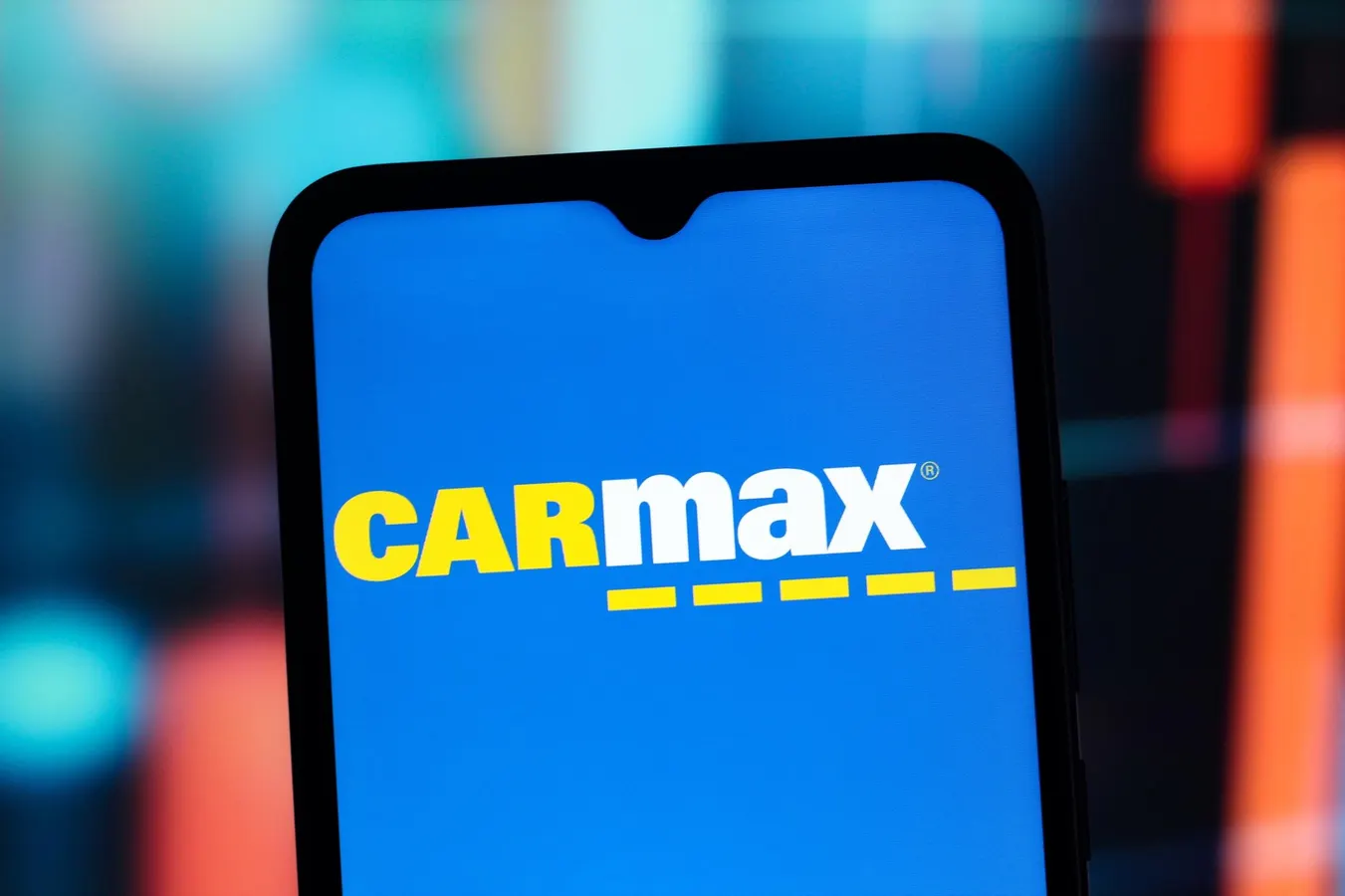By Contributor,Thomas Fuller,Trefis Team
Copyright forbes

CANADA – 2025/09/27: In this photo illustration, the CarMax (Car Max) logo is seen displayed on a smartphone screen. (Photo Illustration by Thomas Fuller/SOPA Images/LightRocket via Getty Images)
SOPA Images/LightRocket via Getty Images
CarMax (NYSE:KMX) shares have dropped by 23% during the past five trading days, reaching approximately $44 per share. Furthermore, the stock is now down over 40% year-to-date. At these prices, it appears relatively undervalued, trading at around 13 times trailing earnings and 0.3 times sales, significantly below the S&P 500. In addition, KMX continues to be a robust business with an extensive national store network and an expanding digital presence, providing it with network effects that smaller rivals cannot replicate. The main question is if the stock is inexpensive enough to warrant a purchase. However, the answer is not particularly compelling.
Regardless of its appeal, investing in a single stock involves considerable risk. The Trefis High Quality Portfolio is structured to lessen stock-specific risk while still offering potential upside.
Tough Q2 Earnings
The steep drop in stock price follows an unexpectedly weak set of Q2 FY’26 results (February fiscal year), along with somewhat cautious remarks from management regarding the outlook for demand. Revenues for the last quarter decreased by 6% year-over-year to $6.59 billion, while earnings per share fell to $0.64, down from $0.85 a year earlier. The company’s financing segment is also experiencing pressure, as income dropped 11% to $103 million, while provisions for loan losses surged to $142 million from $113 million last year. In terms of retail, comparable store used-vehicle sales declined by 6% year-over-year, impacted by cautious consumer spending and rising borrowing costs, which have affected the overall used vehicle market. Additionally, an earlier surge in sales this year—likely driven by fears of tariffs—may have also contributed to the slowdown during the quarter.
Weak Fundamentals
The fundamental outlook for CarMax (KMX) appears rather bleak. Over the last three years, revenues have decreased at an average rate of -7.4%, in stark contrast to the S&P 500’s growth of 5.3%. Even within the latest twelve months, CarMax’s revenue only achieved a slight increase of 1.8%, while the broader S&P 500 constituents grew by 5.1%. Profitability is also significantly lagging, with an operating loss of $234 million over the past year, resulting in a -0.9% margin compared to the S&P’s 18.6% operating margin. Financial stability remains a concern as well: CarMax carries $19 billion in debt against a market cap of $6.7 billion, producing a high debt-to-equity ratio of 286%. Liquidity is also limited, with merely 2% of assets held in cash. Resilience during downturns is lacking as well, as KMX has underperformed the broader market during downturns, both in terms of the extent of decline and recovery speed, indicating weak resilience. Read KMX Dip Buyer Analyses to explore how the stock has rebounded from significant dips in the past.
In summary, although the company faces weaknesses on various fronts, there are potential positive developments. Improvements in the macroeconomic environment, such as anticipated interest rate cuts—with projections suggesting two additional quarter-point reductions by the end of 2025 and another in 2026—could positively impact sectors like the used car market. Furthermore, KMX’s emphasis on aggressive cost management in areas like logistics and vehicle reconditioning might bolster profitability.
MORE FOR YOU
The Trefis High Quality (HQ) Portfolio, consisting of 30 stocks, has a proven track record of substantially outperforming its benchmark, which includes all three indices: S&P 500, Russell, and S&P midcap —achieving returns exceeding 91% since its inception. What accounts for this? As a collective, HQ Portfolio stocks have provided superior returns with reduced risk compared to the benchmark index; consequently, it has exhibited less volatility, as shown in HQ Portfolio performance metrics.
Editorial StandardsReprints & Permissions



